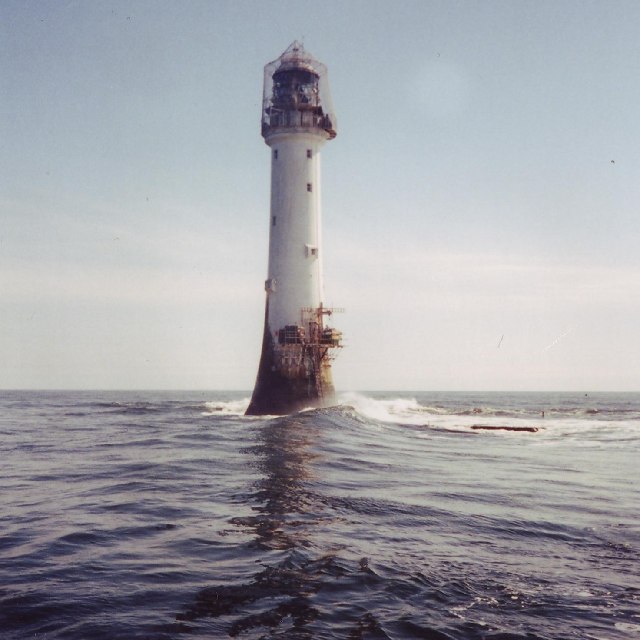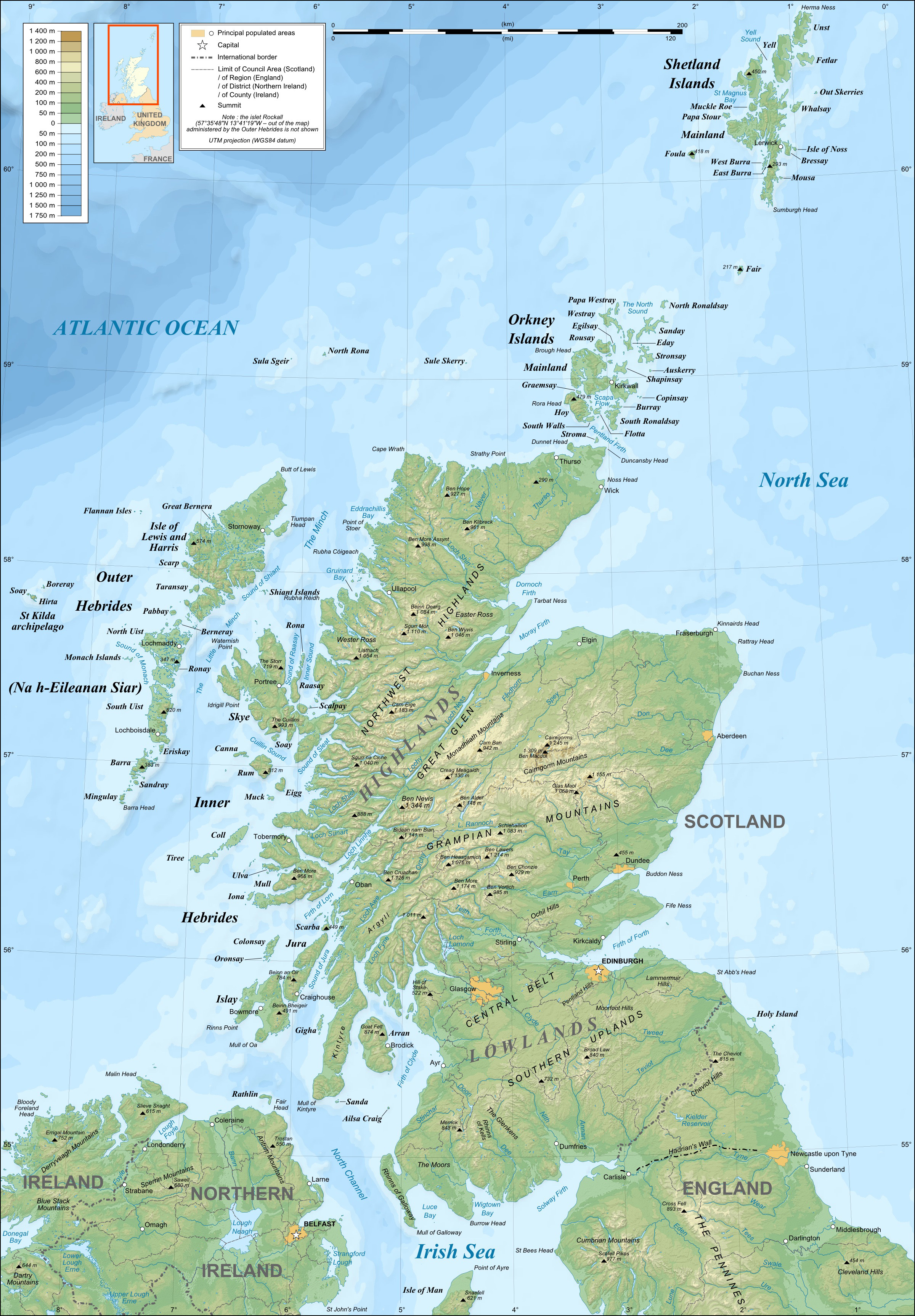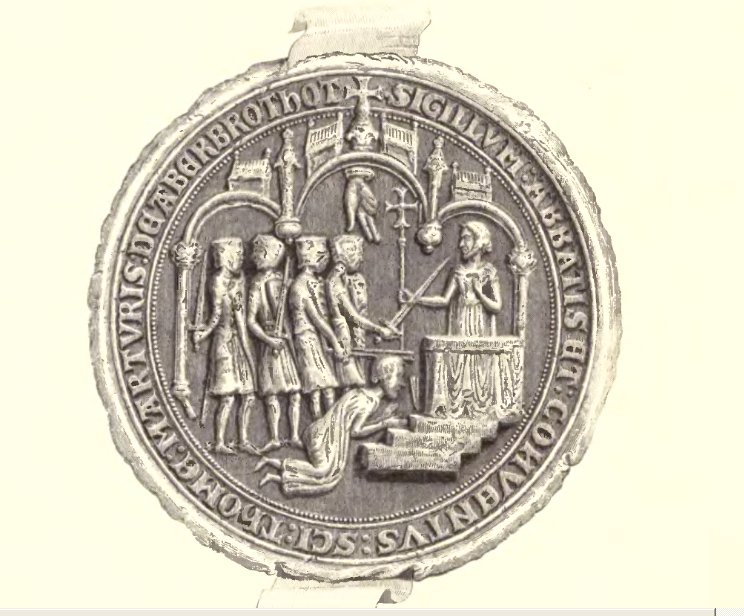|
Inchcape
Inchcape or the Bell Rock is a reef about off the east coast of Angus, Scotland, near Dundee and Fife, occupied by the Bell Rock Lighthouse. The name ''Inchcape'' comes from the Scottish Gaelic ''Innis Sgeap'', meaning "Beehive isle", probably comparing the shape of the reef to old-style skep beehives. According to legend, probably folk etymology, the alternative name Bell Rock derives from a 14th-century attempt by the Abbot of Arbroath ("Aberbrothock") to install a warning bell on the reef; the bell was removed by a Dutch pirate who perished a year later on the rocks, a story that is immortalised in "The Inchcape Rock" (1802), a poem by Robert Southey. The main hazard the reef presents to shipping is that only a relatively small proportion of it is above water, but a large section of the surrounding area is extremely shallow and dangerous. The rock was featured in a one-hour episode of the BBC's ''Seven Wonders of the Industrial World'', which told the story of the Bell Ro ... [...More Info...] [...Related Items...] OR: [Wikipedia] [Google] [Baidu] |
The Inchcape Rock
"The Inchcape Rock" is a ballad written by English poet Robert Southey. Published in 1802, it tells the story of a 14th-century attempt by the Abbot of Arbroath ("Aberbrothock") to install a warning bell on Inchcape, a notorious sandstone reef about off the east coast of Scotland. The poem tells how the bell was removed by a pirate, who subsequently perished on the reef while returning to Scotland in bad weather some time later. Like many of Southey's ballads "The Inchcape Rock" describes a supernatural event, but its basic theme is that those who do bad things will ultimately be punished accordingly and poetic justice done. Biographical background and publication Southey wrote the poem between 1796 and 1798 for ''The Morning Post'', but it was not published until 1802. His inspiration was the legend of a pirate who removed a bell on Inchcape placed there by the Abbot of Arbroath to warn mariners of the reef. The poem was reprinted in the ''Edinburgh Annual Register'' for 1810, ... [...More Info...] [...Related Items...] OR: [Wikipedia] [Google] [Baidu] |
Bell Rock Lighthouse
The Bell Rock Lighthouse, off the coast of Angus, Scotland, is the world's oldest surviving sea-washed lighthouse. It was built between 1807 and 1810 by Robert Stevenson on the Bell Rock (also known as Inchcape) in the North Sea, east of the Firth of Tay. Standing tall, its light is visible from inland. The masonry work on which the lighthouse rests was constructed to such a high standard that it has not been replaced or adapted in 200 years. The lamps and reflectors were replaced in 1843; the original ones are now in the lighthouse at Cape Bonavista, Newfoundland, where they are currently on display. The working of the lighthouse has been automated since 1988. The lighthouse previously operated in tandem with a shore station, the Bell Rock Signal Tower, built in 1813 at the mouth of Arbroath harbour. Today this building houses the Signal Tower Museum, a visitor centre that offers a detailed history of the lighthouse. Because of the engineering challenges that were overco ... [...More Info...] [...Related Items...] OR: [Wikipedia] [Google] [Baidu] |
List Of Outlying Islands Of Scotland
The outlying islands of Scotland are not part of the larger archipelagos and island groups of Scotland—the Hebrides, the Northern Isles or the Islands of the Forth and Clyde estuaries. None of these islands are currently inhabited and few of them ever were, although Hirta was occupied from the Neolithic age until 1930 and Stroma was permanently occupied until the 1970s and thereafter by lighthouse keepers and their families until 1996. Several other outlying islands have lighthouses, none of which is still staffed. In this list, an island is defined as "land that is surrounded by seawater on a daily basis, but not necessarily at all stages of the tide, excluding human devices such as bridges and causeways". A complication relating to membership of this list is that there are various descriptions of the scope of the Hebrides, the large group of islands that lie off Scotland's west coast. The '' Collins Encyclopedia of Scotland'' describes the Inner Hebrides as lying "east ... [...More Info...] [...Related Items...] OR: [Wikipedia] [Google] [Baidu] |
Seven Wonders Of The Industrial World
''Seven Wonders of the Industrial World'' is a 7-part British docudrama television miniseries that originally aired from to on BBC and was later released on DVD. The programme examines seven engineering feats that occurred since the Industrial Revolution. The same feats are covered in a companion book of the same name by producer Deborah Cadbury. Production The programmes were dramatised versions of actual events: actors played the various figures involved, reciting monologues and dialogue based on their letters and writings. It cost approximately £1 million to create the 7-part documentary. A book of the same name was released by producer Deborah Cadbury, exploring the same feats. Awards * 2004 British Academy Television Awards **Nominated: Huw Wheldon Award for Factual Series or Strand *2004 British Academy Television Craft Awards **Nominated: Best Photography (Factual): Mike Spragg *RTS Television Awards 2004 **Nominated: Best Production Design (Entertainment & Non D ... [...More Info...] [...Related Items...] OR: [Wikipedia] [Google] [Baidu] |
Abbot Of Arbroath
The Abbot of Arbroath or Abbot of Aberbrothok (and later Commendator) was the head of the Tironensian Benedictine monastic community of Arbroath Abbey, Angus, Scotland, founded under the patronage of King William of Scotland from Kelso Abbey and dedicated to St Thomas of Canterbury, Thomas Becket. The abbot, John Gedy, was granted the mitre on 26 June 1396. Arbroath Abbey became the wealthiest and most powerful abbey in later medieval Scotland. According to the poem "The Inchcape Rock" by Robert Southey, John Gedy, then Abbot of Aberbrothok, fixed a bell to the inchcape rock in the 1300s to warn mariners of the perilous rock. The following is a list of abbots and commendators. *Reginald, 1178–79 *Henry, 1179–1207 *Gilbert, 1208–19 x 1229 *Radulf de Lamley, 1225–39 *Adam, 1240–46 *Walter, 1247–58 x *Robert, 1261–67 *Sabinus, 1267 ? *John, 1268–70 *William, 1276–84 *Henry, 1285–96 *Nicholas, 1296 x 99-1301Became Bishop of Dunblane. *John de Anegus, 1303–09 ... [...More Info...] [...Related Items...] OR: [Wikipedia] [Google] [Baidu] |
Robert Stevenson (civil Engineer)
Robert Stevenson, FRSE, FGS, FRAS, FSA Scot, MWS (8 June 1772 – 12 July 1850) was a Scottish civil engineer, and designer and builder of lighthouses. His works include the Bell Rock Lighthouse. Early life Robert Stevenson was born in Glasgow. His father was Alan Stevenson, a partner in a West Indies sugar trading house in the city. Alan died of an epidemic fever on the island of St. Christopher in the West Indies on 26 May 1774, a few days before Robert's second birthday. Robert's uncle died of the same disease around the same time. Since this left Alan's widow, Jean Lillie Stevenson, in much-reduced financial circumstances, Robert was educated, as a young child, at a charity school. Robert's mother intended him to join the ministry, so when he was a bit older she enrolled him in the school of a locally famous Glasgow linguist, a Mr Macintyre. But when Robert was 15, she remarried and the family moved to 1 Blair Street, off the Royal Mile in Edinburgh. Robert's new stepfath ... [...More Info...] [...Related Items...] OR: [Wikipedia] [Google] [Baidu] |
Robert Southey
Robert Southey ( or ; 12 August 1774 – 21 March 1843) was an English poet of the Romantic school, and Poet Laureate from 1813 until his death. Like the other Lake Poets, William Wordsworth and Samuel Taylor Coleridge, Southey began as a radical but became steadily more conservative as he gained respect for Britain and its institutions. Other romantics such as Byron accused him of siding with the establishment for money and status. He is remembered especially for the poem "After Blenheim" and the original version of "Goldilocks and the Three Bears". Life Robert Southey was born in Wine Street, Bristol, to Robert Southey and Margaret Hill. He was educated at Westminster School, London (where he was expelled for writing an article in ''The Flagellant'', a magazine he originated,Margaret Drabble ed: ''The Oxford Companion to English Literature'' (6th edition, Oxford, 2000), pp 953-4. attributing the invention of flogging to the Devil), and at Balliol College, Oxford. Southey ... [...More Info...] [...Related Items...] OR: [Wikipedia] [Google] [Baidu] |
Skerries Of Scotland
A skerry is a small rocky island, usually defined to be too small for habitation. Skerry, skerries, or The Skerries may also refer to: Geography Northern Ireland * Skerries, County Armagh, a townland in County Armagh * Skerry, County Antrim, a parish in County Antrim *The Skerries, Northern Ireland Republic of Ireland *Skerries, Dublin, a seaside town in Fingal, County Dublin ** Skerries railway station * Skerries, County Kildare, a townland in County Kildare Russia * Minina Skerries *The area surrounding Taymyr Island * Sumsky Skerries Scotland *Sule Skerry * Skerryvore *A number of locations in the Orkney Islands **Auskerry ** Pentland Skerries *A number of locations in the Shetland Islands **Out Skerries **Gaut Skerries, in the Ramna Stacks **Ve Skerries South Georgia *Skrap Skerries United States *Skerry, New York Wales *The Skerries, Isle of Anglesey Australia *The Skerries (Victoria) Literature and music *Skerry, a fictional mammal in Neal Stephenson's novel '' ... [...More Info...] [...Related Items...] OR: [Wikipedia] [Google] [Baidu] |
Islands Of The North Sea
An island (or isle) is an isolated piece of habitat that is surrounded by a dramatically different habitat, such as water. Very small islands such as emergent land features on atolls can be called islets, skerries, cays or keys. An island in a river or a lake island may be called an eyot or ait, and a small island off the coast may be called a holm. Sedimentary islands in the Ganges delta are called chars. A grouping of geographically or geologically related islands, such as the Philippines, is referred to as an archipelago. There are two main types of islands in the sea: continental and oceanic. There are also artificial islands, which are man-made. Etymology The word ''island'' derives from Middle English ''iland'', from Old English ''igland'' (from ''ig'' or ''ieg'', similarly meaning 'island' when used independently, and -land carrying its contemporary meaning; cf. Dutch ''eiland'' ("island"), German ''Eiland'' ("small island")). However, the spelling of the word ... [...More Info...] [...Related Items...] OR: [Wikipedia] [Google] [Baidu] |
Arbroath Abbey
Arbroath Abbey, in the Scottish town of Arbroath, was founded in 1178 by King William the Lion for a group of Tironensian Benedictine monks from Kelso Abbey. It was consecrated in 1197 with a dedication to the deceased Saint Thomas Becket, whom the king had met at the English court. It was William's only personal foundation — he was buried before the high altar of the church in 1214. The last Abbot was Cardinal David Beaton, who in 1522 succeeded his uncle James to become Archbishop of St Andrews. The Abbey is cared for by Historic Environment Scotland and is open to the public throughout the year (entrance charge). The distinctive red sandstone ruins stand at the top of the High Street in Arbroath. History King William gave the Abbey independence from its founding abbey, Kelso Abbey, and endowed it generously, including income from 24 parishes, land in every royal burgh and more. The Abbey's monks were allowed to run a market and build a harbour. King John of England ga ... [...More Info...] [...Related Items...] OR: [Wikipedia] [Google] [Baidu] |
Old Red Sandstone
The Old Red Sandstone is an assemblage of rocks in the North Atlantic region largely of Devonian age. It extends in the east across Great Britain, Ireland and Norway, and in the west along the northeastern seaboard of North America. It also extends northwards into Greenland and Svalbard. These areas were a part of the ancient continent of Euramerica, Euramerica/Laurussia. In Britain it is a lithostratigraphy, lithostratigraphic unit (a sequence of rock strata) to which Stratigraphy, stratigraphers accord Geological unit#Lithostratigraphic units, supergroup status and which is of considerable importance to early paleontology. For convenience the short version of the term, ORS is often used in literature on the subject. The term was coined to distinguish the sequence from the younger New Red Sandstone which also occurs widely throughout Britain. Sedimentology The Old Red Sandstone describes a suite of sedimentary rocks deposited in a variety of environments during the Devonian ... [...More Info...] [...Related Items...] OR: [Wikipedia] [Google] [Baidu] |
Scotland
Scotland (, ) is a country that is part of the United Kingdom. Covering the northern third of the island of Great Britain, mainland Scotland has a border with England to the southeast and is otherwise surrounded by the Atlantic Ocean to the north and west, the North Sea to the northeast and east, and the Irish Sea to the south. It also contains more than 790 islands, principally in the archipelagos of the Hebrides and the Northern Isles. Most of the population, including the capital Edinburgh, is concentrated in the Central Belt—the plain between the Scottish Highlands and the Southern Uplands—in the Scottish Lowlands. Scotland is divided into 32 administrative subdivisions or local authorities, known as council areas. Glasgow City is the largest council area in terms of population, with Highland being the largest in terms of area. Limited self-governing power, covering matters such as education, social services and roads and transportation, is devolved from the Scott ... [...More Info...] [...Related Items...] OR: [Wikipedia] [Google] [Baidu] |








